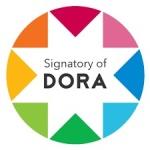Determinants of the choice of islamic banking products in Algeria: an empirical study
Abstract
The choice of islamic banking products is based on many factors; religious, cultural or economical. The determinants of the choice of these products are still not well known in Algeria as these products are still emerging.
Therefore, this article aims to study the factors that determine the choice of islamic banking products instead of conventional products by Algerian consumers. Hence, an empirical study by regression is used by analyzing the impact of each factor on the preference for these products. The study is held on the 77 responses to a questionnaire addressed to users of these products.
Results show that the preference for islamic products for the Algerian consumer is mainly based on the religious factor and to a lesser extent on the social factor. However, the other factors do not influence this choice which is atypical for Algeria but corresponds to the real characteristics of the products offered.
Downloads
References
Ahmad, N., & Haron, S. (2002). Perceptions of Malaysian corporate customers towards Islamic banking products and services. International Journal of Islamic Financial Services, 3(4), 13-29.
Al-Ajmi, J., Abo Hussain, H., & Al-Saleh, N. (2009). Clients of conventional and Islamic banks in Bahrain: How they choose which bank to patronize. International Journal of Social Economics, 36(11), 1086-1112.
Al-Hawari, M., & Ward, T. (2006). The effect of automated service quality on Australian banks’ financial performance and the mediating role of customer satisfaction. Marketing Intelligence & Planning, 24(2), 127-147.
Arora, R., Cavusgil, S. R., & Nevin, J. R. (1985). Evaluation of financial institutions by bank versus saving and loan customers: an analysis of factor congruency. International Journal of Bank Marketing, 3(3), 47-55.
Avkiran, N. K. (1999). Quality customer service demands human contact. International Journal of Bank Marketing, 17(2), 61-74.
Awan, H. M., & Khuram, S. S. (2011). Customer's criteria for selecting an Islamic bank: Evidence from Pakistan. Journal of Islamic Marketing, 2(1), 14-27.
Bachir, M. F. (2013). The Determinants of Selecting Islamic Banks From the Point of View of Their Individual Customers at the State of Kuwait: An Empirical Study. Middle East University. Kuwait: Mémoire de Magistère.
Chahrazed, I. (2020, Mars 27). Finance Islamique en Algérie: La banque d'Algérie fixe les conditions. Consulté le Juin 25, 2020, sur Dzair Daily: https://www.dzairdaily.com
De Mooji, M. (2019). Consumer behavior and culture: consequences for global marketing and advertising (éd. 3ème). Thousand Oaks, Californie: SAGE.
Dusuki, A. W., & Abdullah, N. I. (2007). Why do Malaysian customers patronise islamic banks? International Journal of Bank Marketing, 25(3), 142-160.
Gerrard, P., & Cunningham, B. (1997). Islamic banking: a study in Singapore. International Journal of Bank Marketing, 15(6), 204-216.
Gerrard, P., & Cunningham, J. B. (2001). Singapore’s undergraduates: how they choose which bank to patronise. International Journal of Bank Marketing, 19(3), 104-114.
Haron, S., Ahmad, N., & Planisek, S. I. (1994). Bank patronage factors of Muslim and non-Muslim customers. International Journal of Bank Marketing, 12(1), 32-40.
Kaabachi, S. (2015). Le comportement du consommateur envers les banques islamiques: une méta-analyse des perceptions, des attitudes et des critères de choix des individus. Les cahiers de la finance islamique(8), 7-40.
Kaufman, G. G. (1967). A Survey of Business Firms and Households View of a Commercial Bank. Report to the Federal Reserve Bank of Chicago. Appleton (Etats-Unis): University of Wisconsin.
Kaynak, E., & Harcar, T. D. (2005). American consumers’ attitudes towards commercial banks:a comparison of local and national bank customers by use of geodemographic. International Journal of Bank Marketing, 23(1), 73-89.
Martenson, R. (1985). Consumer Choice Criteria in Retail Bank Selection. International Journal of Bank Marketing, 3(2), 64-75.
Mason, J. B., & Mayer, M. L. (1974). Differences between high-and-low-income savings and checking account customers. The Magazine of Bank Administration, 65, 48-52.
Metawa, S. A., & Almossawi, M. (1998). Banking behaviour of Islamic bank customers: perspectives and implications. International Journal of Bank Marketing, 16(7), 299-313.
Nacer, K., Jamal, A., & Al-Khatib, K. (1999). Islamic Banking : A Study of Customer Satisfaction and Preference in Jordan. International Journal of Bank Marketing, 17(3), 135-150.
Omer, H. (1992). The implication of Islamic beliefs and practice on Islamic financial institutions in the UK: Profit-Sharing and Risk. Loughborough University. Loughborough (Royaume Unis): Thèse de Doctorat.
Sami, A. (2017). Les banques islamiques en Algérie. Ecole Nationale Supérieure de Statistiques et d'Economie Appliquée. Alger: Thèse de Doctorat.
Siguaw, J. A., & Simpson, P. M. (1997). Effects of Religiousness on Sunday Shopping and Outshopping Behaviors: A Study of Shopper Attitudes and Behaviors in the American South. The International Review of Retail, 7(1), 23-39.
Zaher, T. S., & Hassan, M. K. (2001). A comparative literature survey of Islamic finance and banking. Financial Markets, Institutions & Instruments, 10, 155-199.
Copyright (c) 2021 Amani Ismail

This work is licensed under a Creative Commons Attribution-NonCommercial 4.0 International License.















